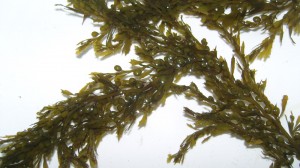Frederic Mineur, Andrew J. Davies, Christine Maggs, Marc Verlaque and Mark Johnson

- The invasive alga Sargassum muticum
Not all introduced (invasive) species in a region will spread from a single point of introduction. Long-distance dispersal or further introductions can obscure the pattern of spread, but the regional importance of such processes is difficult to gauge. These difficulties are further compounded when information on the multiple scale process of invasive species range expansion is reduced to one-dimensional estimates of spread (e.g. km yr−1). We therefore compared the results of two different metrics of range expansion: maximum linear rate of spread and accumulation of occupied grid squares (50 × 50 km) over time. An analysis of records for 54 species of introduced marine macrophytes in the Mediterranean and northeast Atlantic revealed cases where the invasion process was probably missed (e.g. Atlantic Bonnemaisonia hamifera) and suggested cases of secondary introductions or erratic jump dispersal (Dasysiphonia sp. and Womersleyella setacea). A majority of species analysed showed evidence for an accumulation of invaded sites without a clear invasion front. Estimates of spread rate are increasing for more recent introductions. The increase is greater than can be accounted for by temporally varying search effort and implies a historical increase in vector efficiency and/or a decreased resistance of native communities to invasion.
Request PDF
| To request a PDF copy of this paper, please enter your email address below: Your email address is not stored, it is only used to send an email with an attached PDF to you. |
Full citation
Mineur F, Davies AJ, Maggs CA, Verlaque M, Johnson MP (In press) Fronts, jumps and secondary introductions suggested as different invasion patterns in marine species, with an increase in spread rates over time. Proceedings of the Royal Society B: Biological Sciences. 277: 2693-2701
